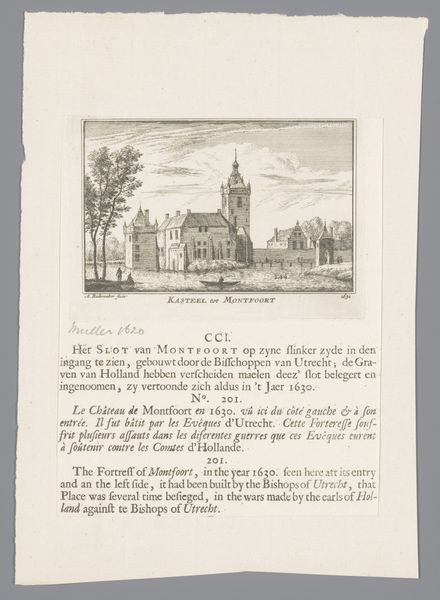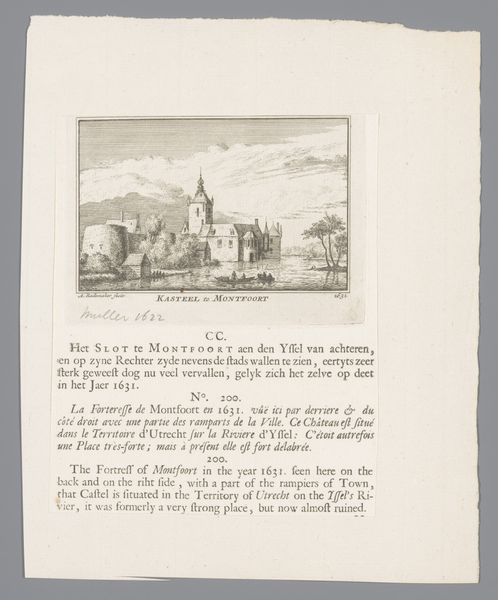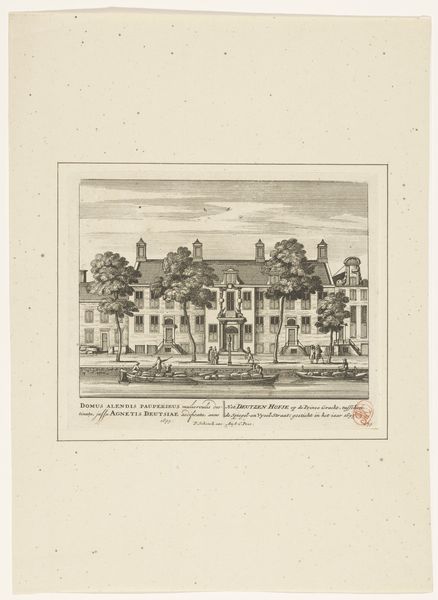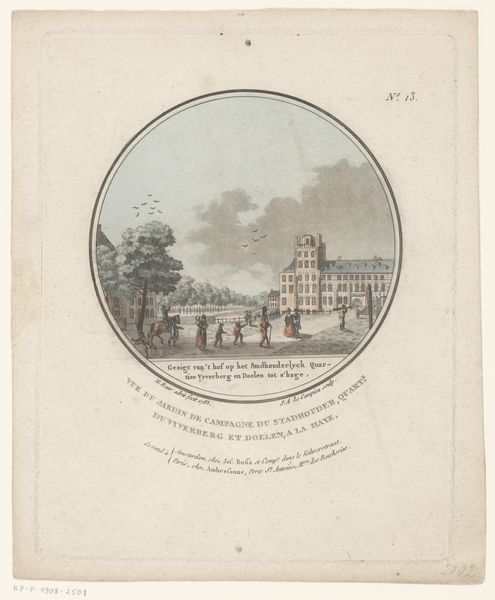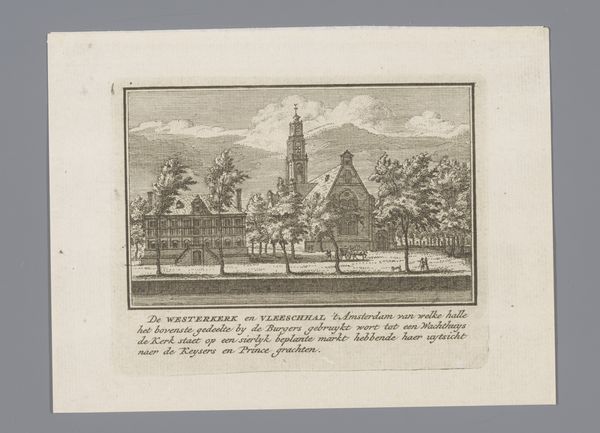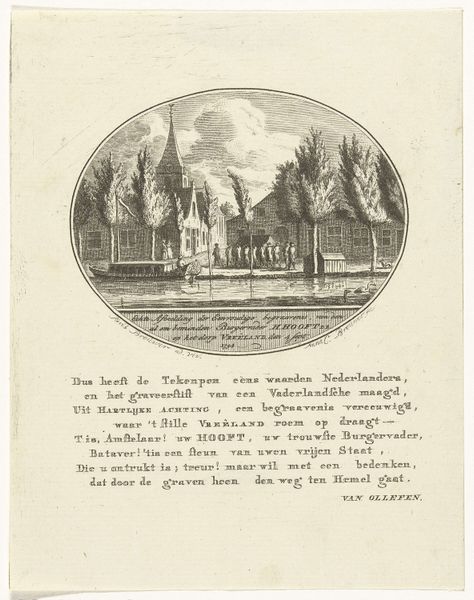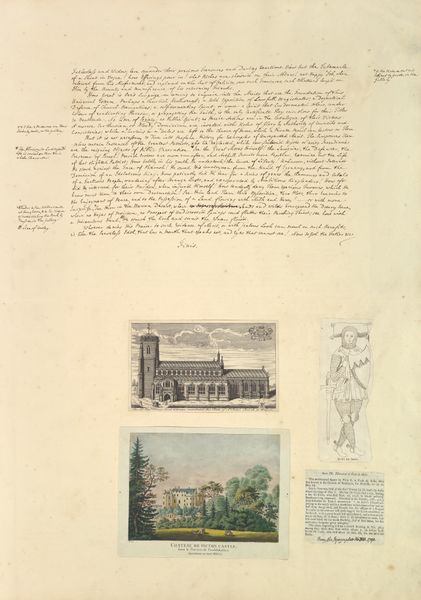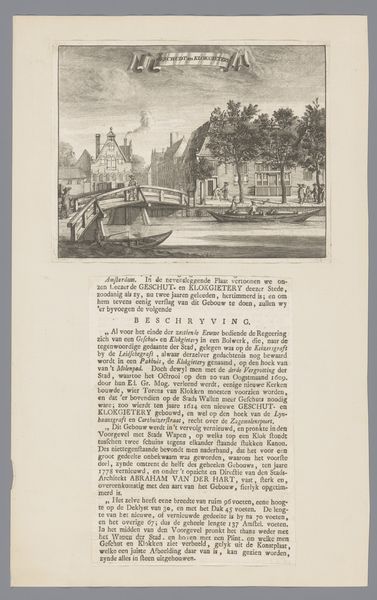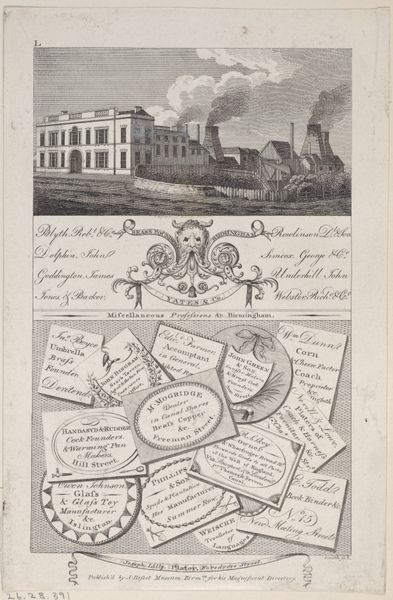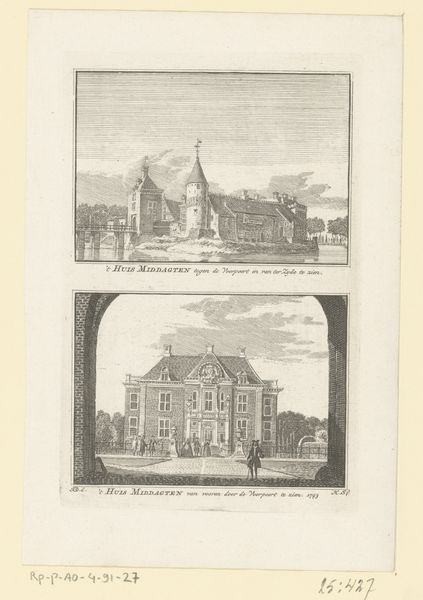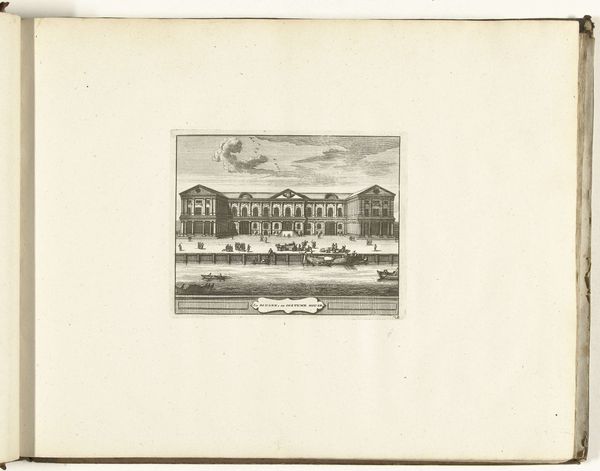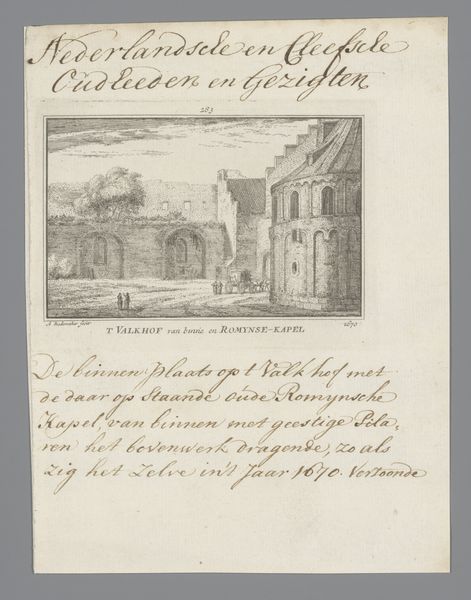
print, engraving
#
baroque
# print
#
landscape
#
engraving
Dimensions: height 153 mm, width 124 mm
Copyright: Rijks Museum: Open Domain
Editor: This engraving, titled "Gezicht op ridderhofstad Oudaan aan de Vecht in Breukelen," by Abraham Rademaker, dates back to 1725. It feels very much of its time—ordered, almost clinical in its depiction of this country estate. What strikes you when you look at it? Curator: The engraving invites a discussion about power, doesn’t it? The image is clearly meant to showcase wealth and control over the landscape. Think about the historical context: The Dutch Golden Age had recently ended, but its social structures, particularly around land ownership and class, remained very much in place. How does Rademaker's composition reinforce existing social hierarchies? Editor: I hadn't considered it that way. I was more focused on the serene depiction of nature, the balanced composition and baroque stylistic elements. But you’re right, there is something about the house, so prominently placed, that conveys authority. Curator: Precisely. And consider the position of the viewer. We're placed outside the walls, looking in. It subtly emphasizes the separation between the owners and the outside world. Think about who this image was intended for. Was it meant to be celebratory or aspirational? Or maybe to create a sense of shared cultural identity among the elite? Editor: So, it’s not just a landscape, but a representation of societal structures? I guess the ‘charming prospect’, as the print calls it, is only charming for some. Curator: Exactly! By examining these power dynamics, we gain a deeper understanding of the print and its place within the society of its time. Editor: This has made me completely rethink how I look at landscape art! Curator: Which shows the importance of understanding art as an extension of sociopolitical structures.
Comments
No comments
Be the first to comment and join the conversation on the ultimate creative platform.
